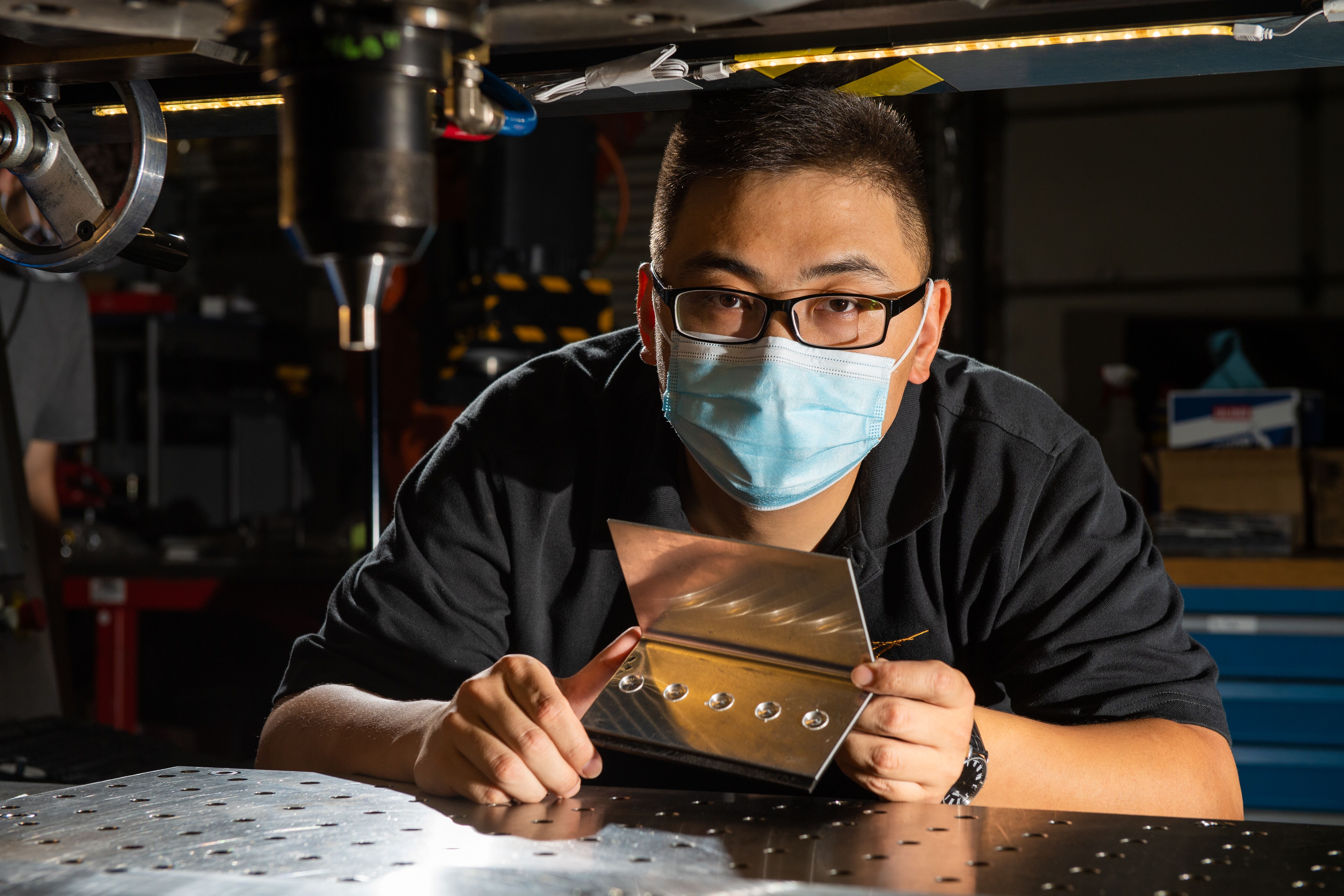Technology Overview
A novel riveting process invented by researchers at PNNL opens the door for lighter weight vehicles and faster manufacturing production lines. The patent-pending Rotating Hammer Riveting Tool makes lightweight magnesium easier to form and reduces the time needed to join each rivet. The same invention can be used with aluminum rivets, as well. Industries spanning the breadth of automotive, aerospace, and energy sectors can benefit from this “riveting” advancement.
Use Lightweight Magnesium Rivets without Preheating
Magnesium is one of the lightest metals—making it ideal for better fuel economy in vehicles. But it trails behind aluminum and steel in industrial use because it’s sometimes brittle and difficult to shape into structural parts. The new friction-based Rotating Hammer Riveting Tool avoids the need to pre-heat the metal to form the rivet and improves the fastening joint. It also works on aluminum rivets, which are used in airplane construction. The processing method is also significantly faster, which can save time and money in airplane and vehicle construction.
Riveting is one of the oldest known techniques for joining different materials and became ubiquitous across a massive array of structural applications ranging from buildings to bridges and battleships to airplanes. But the riveting process has remained virtually unchanged. Take a cylindrical piece of metal with a mushroom-shaped cap on one end, slip the shank or stem through holes in the two materials you want to join, then beat on one end of the shank with a hammer to form a second head that clinches the two materials together.
If you tried to use this process with a magnesium rivet, it would probably shatter. While a magnesium alloy has high strength for its light weight, magnesium tends to be brittle at room temperature. Typically magnesium alloy rivets are heated to get them soft enough to hammer and bend without breaking.
Heating each rivet is slow and expensive, so magnesium rivets are rarely used, although they are 30 percent lighter than the aluminum rivets that are used to join magnesium sheet metal. Conversely, PNNL’s Rotating Hammer Riveting Tool does not require pre-heat, making the riveting process 4 to 12 times faster and delivering the added benefits of enhanced strength and corrosion prevention properties.
Faster, Stronger Process for Riveting Magnesium Fasteners
The Rotating Hammer Riveting Tool is an offshoot of friction stir welding, also available for licensing. The technique uses a small rotating tool, called a hammer. The rotational force generates heat via friction and deformation, which softens the magnesium enough to form the rivet head, while also mixing the underside of the rivet’s head to metallurgically bond with the underlying metal sheet. This merging of metals forms a continuous bond that wards off corrosion.
The new process deforms the metal, altering its crystalline structure. Using high-powered microscopes, researchers were able to see how the grains were refined and reoriented to make the magnesium more formable and stronger.
Works with Aluminum Rivets, Reducing Cost and Increasing Efficiency
PNNL’s Rotating Hammer Riveting Tool works on aluminum rivets, as well, such as those used in aircraft. With hundreds of thousands of rivets on every commercial airplane—mostly made from aluminum alloy 2024—the process could reduce costs and increase efficiency on production lines.
Rivets made of aluminum alloy 2024 are too strong to rivet if stored at room temperature. Instead, they must be annealed, or softened, and then stored in a freezer to keep them soft before riveting. Once on the production line, these “ice box rivets” must be used in less than 15 to 30 minutes, otherwise they become too hard to rivet.
However, PNNL’s tool can rivet aluminum 2024 rivets after they are in the fully hardened state, eliminating the need for cold storage. This means rivets would no longer need to be stored in a freezer, riveting is not time sensitive, and unused rivets no longer need to be re-heat treated and re-placed into cold storage.
Processing aluminum using the Rotating Hammer Riveting Tool is extremely fast. Conventional riveting takes between 1 to 3 seconds per rivet, while PNNL’s tool requires just 0.25 seconds. That time savings could translate into 40 hours saved per 100,000 rivets. That would mean one full week less spent riveting on just a fraction of one commercial airliner if this technology was adopted.
Advantages
Benefits Automotive, Aerospace, and Energy Sectors
- Can be used to rivet magnesium and aluminum fasteners
- Doesn’t require preheating magnesium to form the rivet and improves the fastening joint
- Four to 12 times faster than current process using magnesium fasteners
- Enhances strength and prevents corrosion
- Rivets aluminum alloy 2024 fasteners after they are in the fully hardened state, eliminating the need for cold storage
- Extremely fast process for riveting aluminum fasteners—just 0.25 seconds compared to 1 to 3 seconds per rivet
State of Development
PNNL’s Rotating Hammer Riveting Tool is available for licensing in all fields of use.
